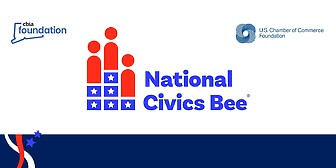Regulators Discuss Doubling Worker Contributions to Fund Troubled Retirement Mandate

As concerns continued to mount around the state’s troubled retirement plan mandate, regulators met Jan. 19 to continue implementing a program universally opposed by Connecticut’s business community.
After postponing implementation of the mandate at its last meeting in November, the Connecticut Retirement Security Authority now faces additional obstacles, including funding sources.
The mandate (Public Act 16-29) forces employers with five or more employees to enroll any full- or part-time employee not eligible for an employer-sponsored retirement plan into a separate plan administered by the authority.
The ill-advised bill’s authors argued that private sector workers were not saving enough for retirement.
Rather than encourage greater participation in private sector 401(k) retirement plans, they created a plan that offers no tax benefit to employees—unlike private sector plans.
The legislation mandates employee contributions at 3% of salary, but deducts that from wages after taxes, with those contributions used to fund the bureaucracy needed to administer the plan.
Shaky, Costly Scheme
The mandate was set to take effect in January this year, but the authority—which only met for the first time in August 2017, more than a year behind schedule—postponed implementation at its November meeting.
The authority is now expected to decide when to launch the program at its next meeting in March.
This retirement plan mandate was a shaky, costly scheme from the start, and the authority’s clumsy attempts to prop up the program and its new administrative superstructure have been no different.
The difficulties in designing and launching the program haven’t stopped the authority from preparing to advertise for an executive director and develop a budget that ponders doubling employee contributions outlined in the original legislation.
This mandate was a shaky, costly scheme from the start, and the clumsy attempts to prop it up have been no different.
Not to worry. Board members suggested they may eventually enroll the director in the more-expensive state retirement and healthcare systems once the retirement fund starts to collect employee contributions.
The cost of eventually enrolling the executive director into the state healthcare and retirement plans would be deducted from the savings of those workers contributing to the plan.
Doubling Employee Contributions?
The conversation then moved to other expected expenses, including roughly $200,000 for legal services to draft governing board documents, management fees, consultant fees, surety bonds, insurance, rent for office space within Department of Labor facilities, and other fees and expenditures.
Next came the discussion on how to fund this spending.
One idea was to pay some authority expenses with money left over from the $400,000 lawmakers appropriated many years ago to study a state-administered retirement plan. These funds have been under control of the state comptroller's office.
Despite the questionable notion of raiding one-time funds intended for another purpose, the authority approved a memorandum of understanding on spending these funds.
One board member suggested they could fund their operation more quickly by doubling the mandated employee contribution from 3% to 6%.
Another board member noted "this would just be like 401(k) plan costs available in the private sector. They need to charge various fees and costs to keep the plan solvent."
But other board members appeared to grow weary discussing spending without appropriate funding sources.
House of Cards
Last year, a powerful bipartisan coalition of legislators enacted long overdue spending and borrowing reforms, indicating a willingness to be better stewards of hard-earned tax dollars.
However, there is perhaps no better case study in unwarranted legislation gone awry than the stumbling effort by well-intentioned CRSA members to bring the retirement plan mandate to life.
This mandate is an expensive house of cards built on a false narrative that retirement plans are unavailable to some workers when, in fact, they are available to any worker who wants one.
A misguided decision to muscle the state into the financial services industry in a way that takes more money out of workers' pockets.
Authority members cannot be blamed for struggling to implement a poorly drafted plan.
But both businesses and their employees will soon pay for the misguided decision to muscle the state into the financial services industry in a way that takes more money out of workers' pockets than if they signed up for an already available 401(k) savings plan.
For more information, contact CBIA's Eric Gjede at 860.244.1931 | @egjede
RELATED
EXPLORE BY CATEGORY
Stay Connected with CBIA News Digests
The latest news and information delivered directly to your inbox.




